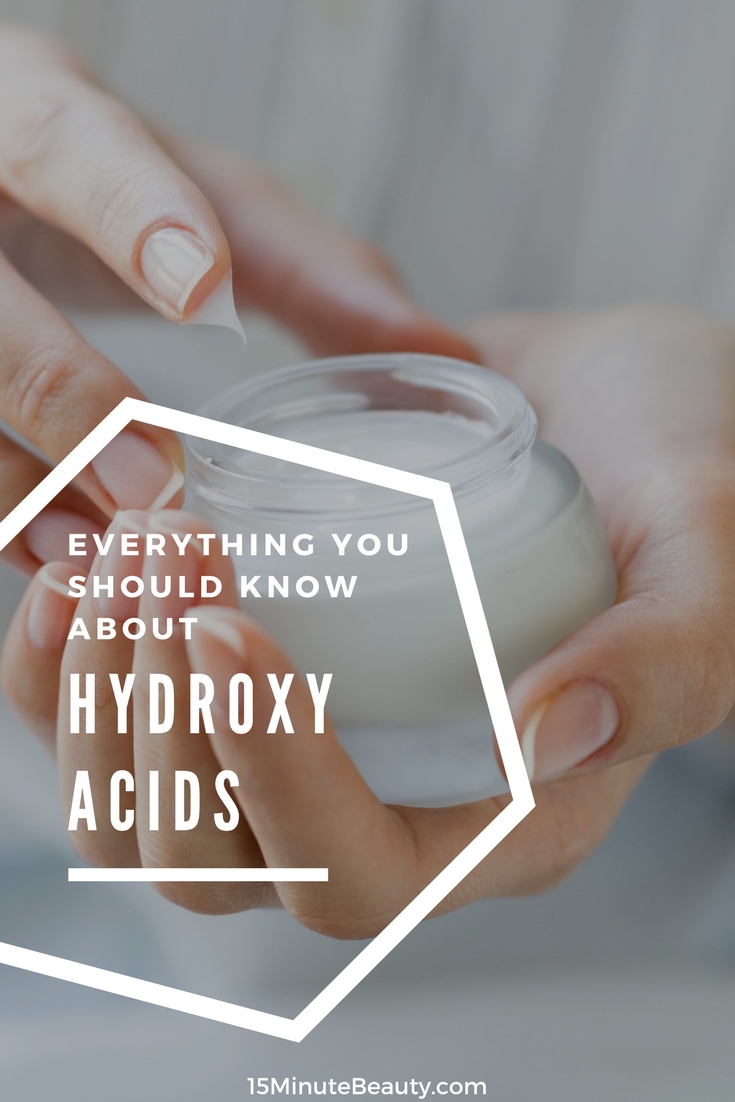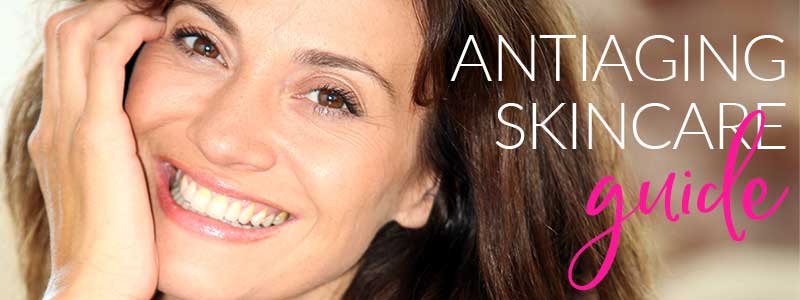Some of the most frequently used skin care additives these days are Hydroxy Acids. Think of how many times you have purchased a product with an alpha hydroxy acid (AHA) such as glycolic acid, lactic acid and citric acid. beta hydroxy acids (BHAs) include salicylic acid.
What is the difference between the alpha and beta hydroxy acids?
A few small differences in their chemical makeup means that AHAs are water soluble while BHAs are oil soluble. This difference means that they will have different uses- BHAs are able to get into clogged pores with oil and dirt and break up any problems; while AHAs are better for use on thick or sun damaged skin without acne.
Alpha Hydroxy Acids

Alpha hydroxy acids are very popular for one main reason, they’ve been shown to decrease the signs of aging, making the skin appear smoother and less mottled. How do they do this? They increase skin turnover! They do help to increase the rate at which the cornified layer is shed, helping to increase the rate of skin regeneration. There is even some (controversial) evidence that AHAs increase collagen and elastic fibers in the dermis. AHAs are most effective when their concentration is 5-8% and the pH is 3-4.
Alpha hydroxy peels are very popular in salons and in doctor’s offices. In the salon the concentration is usually 20-30% and after several applications can have results that last about 6 months. In a doctor’s office, 1 application of 50-70% can last 2-5 years! You’ll see a dramatic decrease in fine lines and scars. However, due to the high acid content, these are the peels that cause major irritation for weeks! Remember that Sex and the City episode where Samantha got a peel and had to wear a veil? This is it. You can have weeks of redness, peeling and even oozing of the skin.
Alpha hydroxy acids can cause quite a bit of irritation. You can see redness, itching, flaking of the skin and even scarring with high concentrations. For those of us with a dark complexion, hydroxy acids can experience pigment changes. For those reasons, please exercise caution with hydroxy acids. Most over the counter preparations should be fine for pretty much anyone, but please don’t go ordering a hydroxy peel that should be used in a doctor’s office over the internet and using it on your own! Most of these peels have a concentration of 20-30% (if for use in a salon) or 50-70% (for use by a MD) and are very powerful. They are available on-line, but that doesn’t make them a good deal or a great idea if you end up with scars. The FDA has helped us to some extent, they’ve put out guidelines that require all products to have a pH of over 3.5 and concentration less than 10%. However, please be careful!
Which AHA should you buy? Get one that is in it’s own product that is a “leave on” product. A gel or a moisturizer is best, since there needs to be skin penetration for AHAs to work and a cleanser will simply wash off too quickly. You want 5-8% concentration (which may or may not be advertised) so look for the AHA to be 2nd or 3rd ingredient on the list. A pH 3.5-4 would be great as well, but you won’t be able to find that out unless you bring pH test strips with you to the store!
Beta Hydroxy Acids
Beta hydroxy are also frequently used in cosmetic products, the most frequently used one is salicylic acid. The picture above shows the chemical reactions that create salicylic acid, the compound at the far right, a close cousin of aspirin. Salicyclic acid is the main BHA in use cosmetically, and it works much like AHAs. The salicyclic acid can penetrate into “oily” areas due to its lipophilic (oil loving) nature, and encourage cell turnover, helps to prevent pores from clogging (and helps to breakup up “plugs”). Similar effects on aged skin have been seen with beta hydroxy acids as those seen with alpha hydroxy acids- namely smoothing of the skin and wrinkles. Salicyclic acid is a frequent ingredient in acne meds and dandruff shampoos as well as wart medications and works best at pH 3-4 with 1-2% concentration. Since a lower concentration is needed, a product that lists the BHA in the middle (or even the bottom) of the ingredient list is still likely to be effective.
Note that Salicyclic acid is irritating to the skin just as the AHAs are, however not to the same extent. While it’s true that BHAs do penetrate more deeply, since salicyclic acid is related to aspirin it has some anti-inflammatory properties.
Beta hydroxy acids are also being used in peels in your doctors office. Usually used at 25-40% concentration, these peels are generally milder than those done with alpha hydroxy acids. However, the peels do still penetrate fairly deeply (they do eliminate the epidermis down to the level of the granular layer), and they penetrate deeply into the pores, meaning they can help much more with acne (particularly inflammatory acne) than an AHA peel. Recovery time for a BHA peel is usually closer to a week for full cornified layer regeneration.
Warning
A word of warning about the use of Hydroxy Acids- studies have shown that using them makes your skin more sensitive to the sun, so please be sure to wear sunscreen! A good sunscreen should have a SPF of at least 15 (or higher) and shield against both UVA and UVB rays. Note that sunscreens are not stable at the same pH as alpha and beta hydroxy acids, so any products that combines the two are not likely to be effective as a sunscreen.
| Alpha Hydroxy Acids | Beta Hydroxy Acids |
|---|---|
| glycolic acid lactic acid citric acid mandelic acid malic acid tartaric acid | salicylic acid 2-hydroxy-5-octanoyl benzoic acid (aka-beta-lipohydroxyacid, B-LHA) tropic acid |
Check out more anti-aging skincare information and reviews in my guide!




 I’m a doctor, a mommy and a bit of a beauty addict. If you let me, I can take 2 hours to get ready in the morning. Really. I'm on a quest for faster beauty that works!
I’m a doctor, a mommy and a bit of a beauty addict. If you let me, I can take 2 hours to get ready in the morning. Really. I'm on a quest for faster beauty that works!
very informative
This is a very detailed and informative post. I was thinking of getting a glycolic acid peel kit, but after reading this, i now know that what i need is a salicylic acid peel instead. thanks…
Still referring to your site after my 2nd pregnancy. I’m now 10 months postpartum and nursing. I love your site so much – I hope you’ll keep running it for as long as you can. My skincare has been super simple over the years from pregnancies and nursing. I am thinking of adding a lactic acid serum. I’m 39. Is there a huge difference between a 5% lactic acid and 10%? I’m looking at The Ordinary which offers them in these 2 strengths. Which strength would you recommend going with? Thanks!
I would definitely start with 5% and move up after using up a bottle. I think it’s a tad strong even at 5% (at least for my skin), I can’t tolerate the 10%. 🙂
Malic acid is not safe during pregnancy? The brand honest has a mom to be cream with it but in your website it says that is not safe
It should be avoided in pregnancy.
2 helpful discussions:
skincare ingredients to avoid during pregnancy
Why does X Brand say this product is safe but you don’t think it is safe? (or Vice Versa)